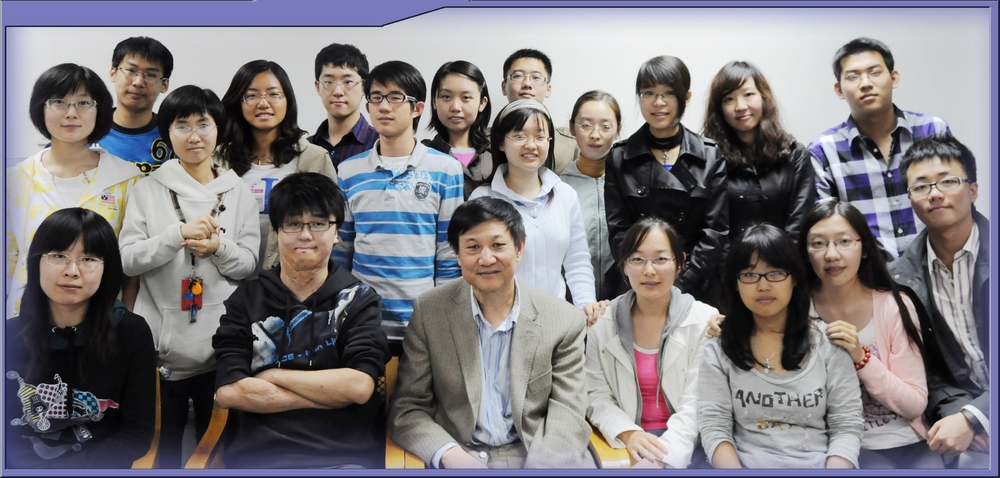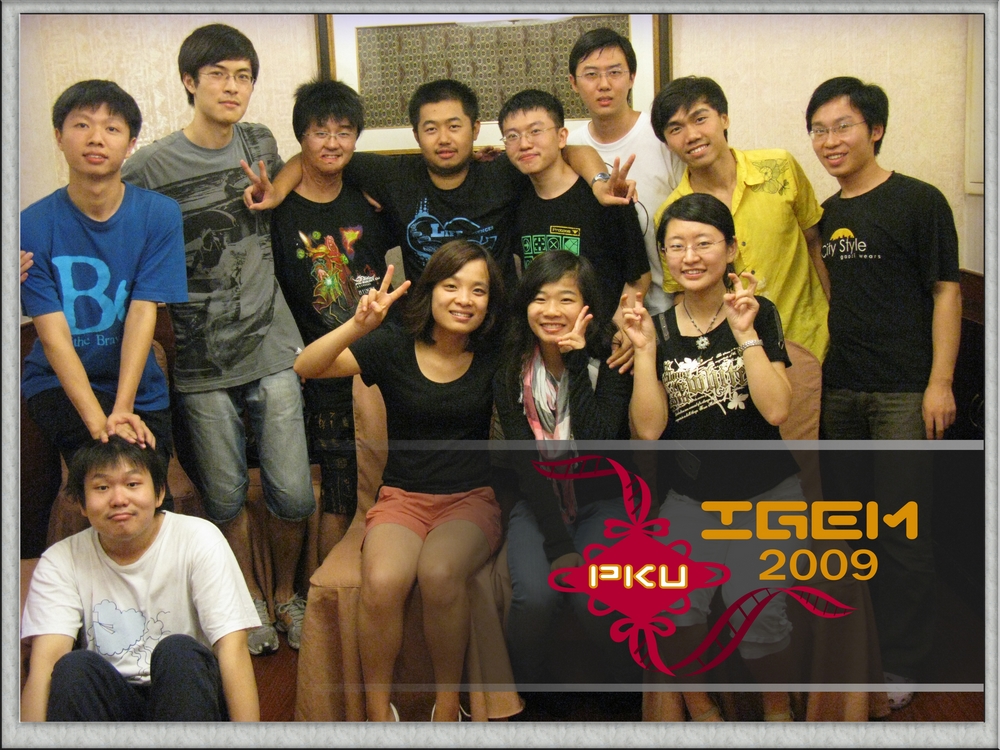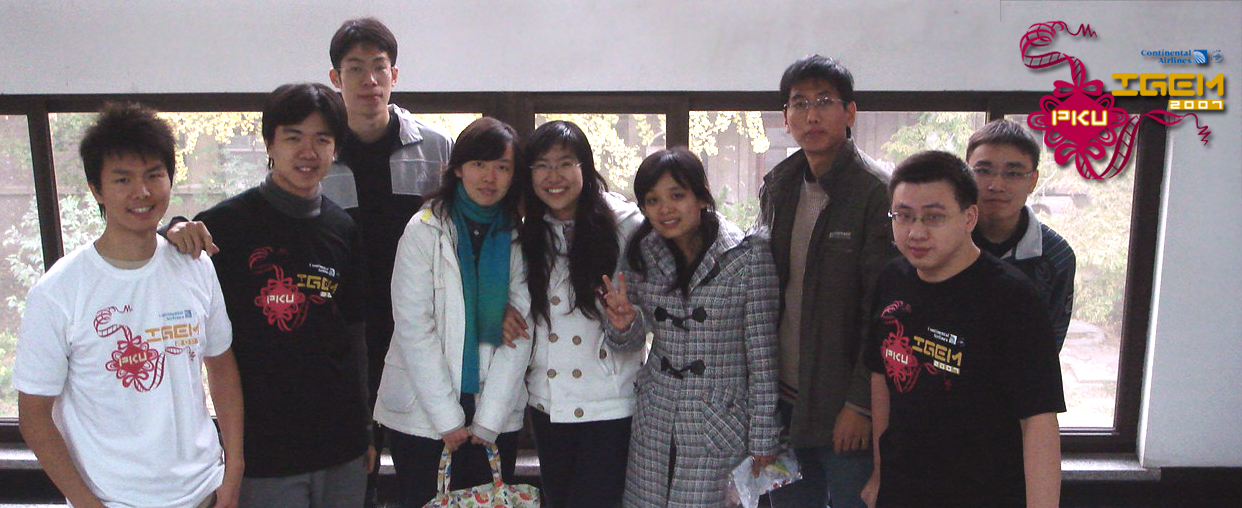Team:Peking S/team/links
From 2011.igem.org
Template:Https://2011.igem.org/Team:Peking S/bannerhidden

Previews years
Year 2010
 Biocontamination Kit
Biocontamination Kit
We’ve developed a strategy for heavy metal bioreporter and bioabsorbent engineering, based on reverse engineering principle, which will help us to break the limitation of our current knowledge and research method. As MerR family TFs share highly conserved homology and most kinds of heavy metals have corresponding MerR family TFs(Brown et al., 2003; Hobman, 2007; Hobman et al., 2005; Julian et al., 2009), we can state that we have developed an extensible method to construct heavy metal decontamination kits composed of valid bioreporters and bioabsorbents for field application in the near future.
Year 2009
 Conditioned Reflex Mimicking in E.coli
Conditioned Reflex Mimicking in E.coli
We are engineering our E.coli cells to process the correlation information of two environmental signal, similar to the process of classical conditioning in higher organisms. In our circuits we use a bistable switch as the memory module to represent the memory state; we also constructed a series of AND gates which can sense conditioned and unconditioned signals, and output a repressor protein to change the memory state of the bistable switch. In this way, our E.coli cells can convert the information on the concurrence of two signals to its memory. After the memory module is switched, given the conditioned stimulus, E.coli will activate its reporter module and thus exhibit the "conditioned response".
Year 2008
 A Genetic Circuit for Directed Evolution in vivo
A Genetic Circuit for Directed Evolution in vivo
Directed evolution is a powerful tool for answering scientific questions or constructing novel biological systems. Here we present a simple genetic circuit for in vivo directed evolution which comprises minimal elements for random mutation and artificial selection. We engineer yeast to generate the DNA mutator hAID, an essential protein in adaptive immunity, and target it specifically to a gene of interest. The target gene will be mutated and consequently promptly evolves. By linking the expression of hAID repressor LacI and favorite gene functionality, the mutation rate inversely correlates between the functionality of the desired gene and hAID. This circuit may be adopted for in vivo evolution in eukaryotic system on genetically encoded targets. It has a variety of potential applications in academic and industrial contexts, theoretically most inter-molecular interaction that involves proteins and RNAs.
Year 2007
 Towards Self-differentiated Bacterial Assembly Line
Towards Self-differentiated Bacterial Assembly Line
Our projects concern with the ability for bacterial cells to differentiate out of homogeneous conditions into populations with the division of labor. We aim at devices conferring host cells with the ability to form cooperating groups spontaneously and to take consecutive steps sequentially even when the genetic background and environmental inputs are identical. To break the mirror in such homogeneous condition, we need two devices respectively responsible for temporal and spatial differentiation. The implementation and application of such devices will lead to bioengineering where complex programs consisted of sequential steps (structure oriented programs) and cooperating agencies (forked instances of a single class, object and event oriented) can be embedded in a single genome. Although this "differentiation" process resemble the development of multicellular organism, we tend to use a more bioengineering style analogy: assembly line. Or maybe after some years from now, this will not be just an analogy.
 "
"